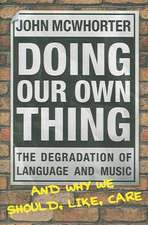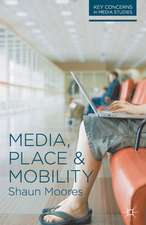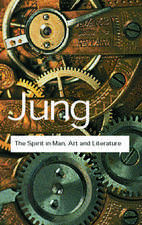Married to the Job (RLE Feminist Theory): Wives' Incorporation in Men's Work: Routledge Library Editions: Feminist Theory
Autor Janet Finchen Limba Engleză Hardback – 11 oct 2012
Married to the Job clearly shows that marriage itself (not just child-bearing) is an important feature of women’s subordination. Dr Finch points to the links between husband’s work, the family and its relationship to economic structures, and suggests that wives are tied into those structures as much as anything through their vicarious involvement in their husband’s work. She views any prospects for change with caution. The organisation of social and economic life makes it difficult for wives to break free from this incorporation even should they wish to; it makes economic good sense for them to continue in most cases; social life is organised so as to make compliance easy; and it provides a comprehensible way of being a wife.
As an empirically-based survey of women’s subordination within marriage, Married to the Job will prove essential reading to all those concerned about the position of women, whether feminists, academics or general readers. It will also provide important background material for undergraduate courses on women’s studies, the sociology of the family, the sociology of work and family policy.
Din seria Routledge Library Editions: Feminist Theory
- 16%
 Preț: 298.01 lei
Preț: 298.01 lei - 37%
 Preț: 622.99 lei
Preț: 622.99 lei -
 Preț: 411.42 lei
Preț: 411.42 lei -
 Preț: 483.55 lei
Preț: 483.55 lei - 34%
 Preț: 767.38 lei
Preț: 767.38 lei - 33%
 Preț: 532.10 lei
Preț: 532.10 lei - 34%
 Preț: 682.29 lei
Preț: 682.29 lei - 18%
 Preț: 782.30 lei
Preț: 782.30 lei - 34%
 Preț: 625.33 lei
Preț: 625.33 lei - 37%
 Preț: 623.71 lei
Preț: 623.71 lei - 34%
 Preț: 825.25 lei
Preț: 825.25 lei - 34%
 Preț: 626.94 lei
Preț: 626.94 lei - 34%
 Preț: 767.20 lei
Preț: 767.20 lei - 34%
 Preț: 626.59 lei
Preț: 626.59 lei -
 Preț: 349.58 lei
Preț: 349.58 lei - 36%
 Preț: 827.76 lei
Preț: 827.76 lei -
 Preț: 413.33 lei
Preț: 413.33 lei - 22%
 Preț: 326.81 lei
Preț: 326.81 lei - 33%
 Preț: 771.88 lei
Preț: 771.88 lei -
 Preț: 415.29 lei
Preț: 415.29 lei -
 Preț: 414.91 lei
Preț: 414.91 lei - 38%
 Preț: 769.00 lei
Preț: 769.00 lei - 34%
 Preț: 626.22 lei
Preț: 626.22 lei - 34%
 Preț: 625.68 lei
Preț: 625.68 lei - 34%
 Preț: 767.74 lei
Preț: 767.74 lei - 36%
 Preț: 626.94 lei
Preț: 626.94 lei - 37%
 Preț: 622.99 lei
Preț: 622.99 lei - 33%
 Preț: 10562.98 lei
Preț: 10562.98 lei - 36%
 Preț: 826.15 lei
Preț: 826.15 lei -
 Preț: 417.20 lei
Preț: 417.20 lei
Preț: 626.41 lei
Preț vechi: 985.85 lei
-36% Nou
Puncte Express: 940
Preț estimativ în valută:
119.86€ • 125.16$ • 98.98£
119.86€ • 125.16$ • 98.98£
Carte tipărită la comandă
Livrare economică 15-29 aprilie
Preluare comenzi: 021 569.72.76
Specificații
ISBN-13: 9780415636773
ISBN-10: 0415636779
Pagini: 200
Dimensiuni: 156 x 234 mm
Greutate: 0.53 kg
Ediția:1
Editura: Taylor & Francis
Colecția Routledge
Seria Routledge Library Editions: Feminist Theory
Locul publicării:Oxford, United Kingdom
ISBN-10: 0415636779
Pagini: 200
Dimensiuni: 156 x 234 mm
Greutate: 0.53 kg
Ediția:1
Editura: Taylor & Francis
Colecția Routledge
Seria Routledge Library Editions: Feminist Theory
Locul publicării:Oxford, United Kingdom
Public țintă
Postgraduate and UndergraduateCuprins
Acknowledgements. 1. Introduction Part 1: Hedging Her In: How Men’s Work Structures Their Wives’ Lives Introduction to Part 1. 2. Time Elements: Patterns, Structures and Competition 3. Work Characteristics: Implications Inside and Outside the Home 4. Spatial Elements: Aspects of the Location of Home and Work 5. Constraints, Identities and Room for Manoeuvre Part 2: Drawing Her In: Wives’ Contributions to their Husband’s Work Introduction to Part 2. 6. Domestic Labour and the Production of the Male Worker 7. Giving Moral Support 8. Two for the Price of One: Peripheral Activities 9. Two for the Price of One: Back-Up Services 10. Two for the Price of One: the Additional Worker 11. The Productive Work of Wives Part 3: Married to the Job: the Foundations of Wives’ Incorporation Introduction to Part 3. 12. Varieties of Incorporation and the Occupational Dimension 13. Doing Three Jobs: the Hierarchy of Priorities 14. Making Sense of Being Married to the Job: Wives’ Careers and Projects. Bibliography. Index.
Descriere
Married to the Job examines an important but under-researched area: the relationships of wives to their husbands’ work. Janet Finch looks both at the way women’s lives are directly affected by the work their husbands do and how they can get drawn into it. Married to the Job clearly shows that marriage itself (not just child-bearing) is an important feature of women’s subordination. Dr Finch points to the links between husband’s work, the family and its relationship to economic structures, and suggests that wives are tied into those structures as much as anything through their vicarious involvement in their husband’s work. She views any prospects for change with caution. The organisation of social and economic life makes it difficult for wives to break free from this incorporation even should they wish to; it makes economic good sense for them to continue in most cases; social life is organised so as to make compliance easy; and it provides a comprehensible way of being a wife.
As an empirically-based survey of women’s subordination within marriage, Married to the Job will prove essential reading to all those concerned about the position of women, whether feminists, academics or general readers. It will also provide important background material for undergraduate courses on women’s studies, the sociology of the family, the sociology of work and family policy.
As an empirically-based survey of women’s subordination within marriage, Married to the Job will prove essential reading to all those concerned about the position of women, whether feminists, academics or general readers. It will also provide important background material for undergraduate courses on women’s studies, the sociology of the family, the sociology of work and family policy.












